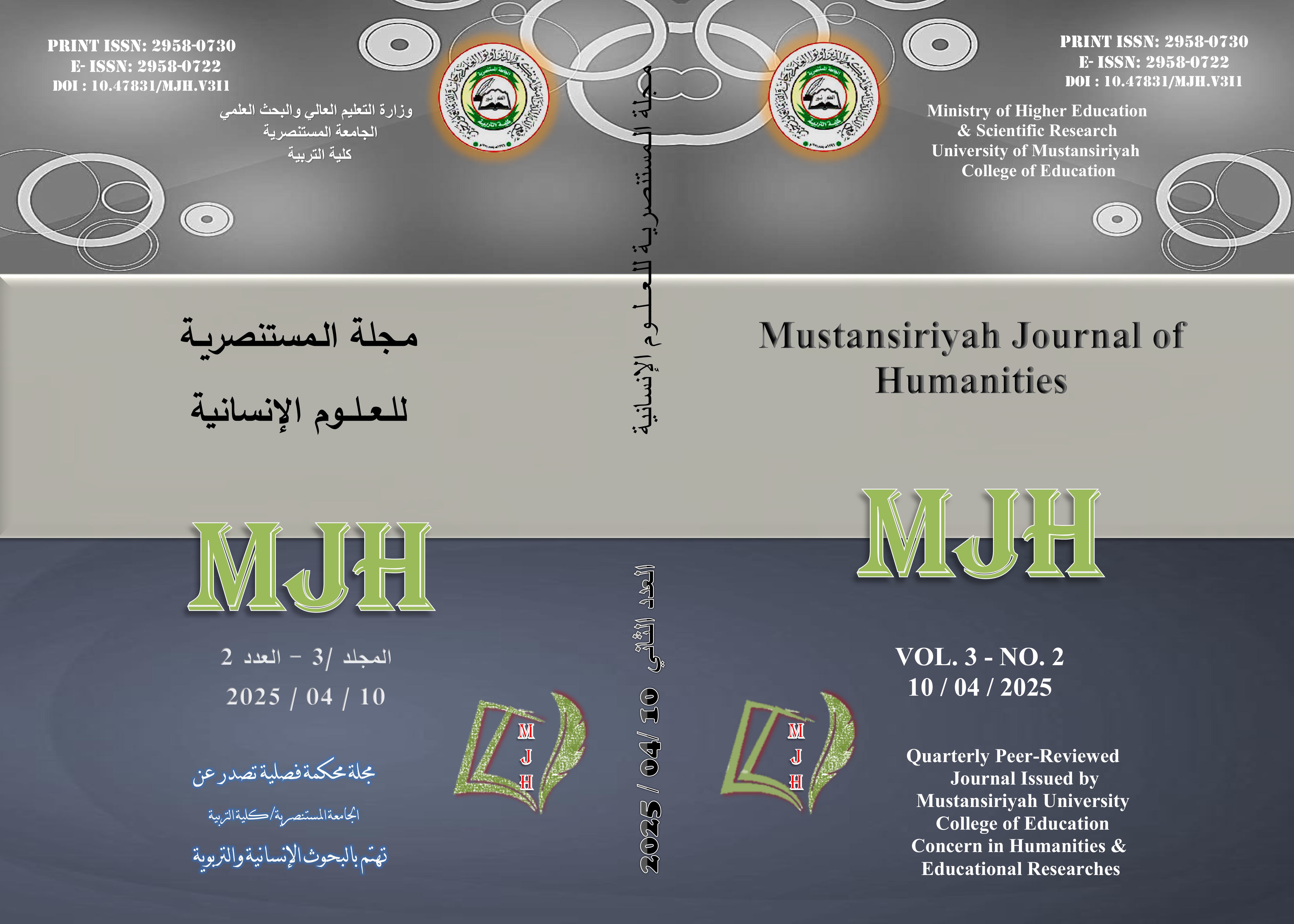Manifestations of nature in the poetry of Adnan Al-Sayegh
DOI:
https://doi.org/10.47831/mjh.v3i2.735Keywords:
manifestations, nature, Adnan Al-Sayegh, poetryAbstract
Nature has occupied a large part of the poems of poets throughout the literary ages, as he devoted long poems to it and created in it a living spirit and made it a living, rational being that speaks to him and shares his conditions, a wise man who complains about his pains and worries, and a lover to whom he expresses his secrets and his anguish. Therefore, when he sees a natural scene, he does not describe it sensually, nor does he stop at abstract superficiality, but rather he is affected by it and looks at it through his thoughts and feelings, so he acts according to what he sees. Rather, he involved nature in this feeling, so it becomes depressed by his depression, and suffers by his pain, or rejoices by his joy. From here, it appears to us that poets were lovers of nature and loved it with a strong love, and such a vision of nature is considered a poetic doctrine in Arabic literature that pertains to poets in the modern era and those who followed it.
As for the poet Adnan Al-Sayegh, he followed the traditional method of describing nature, but he worked on employing symbols that exist in nature in abundance in his poems. These symbols and shapes were not created by God, such as mountains, terrain, trees, and birds, but rather are human requirements that man needs in his daily life, some of which are positive (such as the street, the sidewalk, the garden, the city, etc.), and some of which are negative and not necessary in life (such as the execution square, the statue, and the graves). They have become symbols over decades, so it was necessary to study them and show the great differences between what God created for us and what man made with his own hands.





